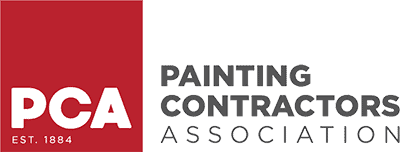Tampa’s tropical climate—marked by high humidity, frequent rain, and intense sun—creates unique challenges for homeowners trying to maintain a durable and beautiful paint job. Unlike drier climates where paint lasts longer with minimal upkeep, Florida’s humidity can lead to bubbling, peeling, mildew growth, and premature fading if the wrong products or techniques are used.
This guide provides 18 expert tips tailored specifically for Tampa homeowners, covering everything from surface preparation and paint selection to application methods and long-term maintenance. By following these strategies, you can ensure that your paint job not only looks great but also stands up to the demanding climate.
Preparing Surfaces for Tampa’s Humidity
1. Thorough Cleaning: The Foundation of a Long-Lasting Finish
Before applying any paint, it’s essential to remove dirt, mildew, and old peeling paint. Tampa’s climate fosters mildew and algae growth, particularly in shaded areas, making thorough cleaning a non-negotiable step.
Best Cleaning Methods:
- Exterior: Soft washing is the preferred method for Tampa homes. This low-pressure cleaning approach, using a mix of water, bleach, and detergent, removes dirt, mildew, and algae without damaging surfaces. High-pressure washing can harm stucco, wood siding, and even brick, so it’s best left to professionals.
- Interior: Use mild soap and water, avoiding excessive moisture that could lead to damage.
- Pressure Washing Tips: If pressure washing is necessary, use a moderate setting to prevent surface damage, and always allow at least 24-48 hours of drying time before painting.
2. Addressing Moisture Damage Before Painting
Moisture trapped under paint is the leading cause of peeling and bubbling. Ignoring underlying issues can lead to costly repairs down the road.
Signs of Moisture Issues:
- Soft or rotting wood
- Water stains on walls or ceilings
- Musty odors
- Bubbling or blistering paint
Solutions:
- Fix leaks in roofs, windows, or plumbing before painting.
- Replace rotted wood and use high-quality, flexible, paintable silicone caulk designed for humid climates.
- Ensure surfaces are completely dry before priming and painting.
- For minor water stains, sealing with a stain-blocking primer may be enough. However, if moisture issues persist, replacing damaged materials is the best long-term solution.
3. Priming for Humidity Resistance
Skipping primer in Tampa’s humid climate is a costly mistake. A high-quality primer acts as a barrier against moisture, improves paint adhesion, and extends the life of your paint job.
Best Primers for Tampa Homes:
- Sherwin-Williams Moisture Block – Creates a strong moisture-resistant seal.
- Kilz Premium – Excellent for covering stains and preventing bleed-through.
- Oil-based primers – Ideal for sealing wood and preventing water absorption.
- Bonding primers – Essential for ensuring adhesion on glossy or previously painted surfaces.
Even with self-priming paints, using a separate primer provides an extra layer of protection, especially in humid conditions. The only exception might be minor touch-ups on previously primed surfaces.
4. Dealing with Existing Mildew
Mildew thrives in Florida’s humid climate and can quickly return if not properly treated before painting.
How to Remove Mildew:
- Mix 1 part bleach with 3 parts water.
- Scrub with a stiff brush and rinse thoroughly.
- Let the surface dry completely before painting.
Preventative Measures:
- Use mildew-resistant paint such as Sherwin-Williams Duration or Benjamin Moore Regal Select.
- Improve indoor ventilation, especially in bathrooms and kitchens.
- Trim back overgrown vegetation to reduce exterior moisture retention.
- Clean painted surfaces at least once a year (or more frequently in high-moisture areas) with mild detergent and water to prevent buildup.
Choosing the Right Paint for Tampa’s Climate
Tampa’s heat, humidity, and intense storms mean your paint has to work overtime. Choosing the right type and finish makes all the difference in durability, appearance, and long-term maintenance.
5. Moisture-Resistant Paints: The First Line of Defense
Humidity can break down certain paints faster, leading to peeling, bubbling, and mildew growth. The key is choosing a formula that stands up to Tampa’s climate.
Best options:
- Acrylic latex paint – A reliable, all-around choice for most exterior surfaces. It’s breathable, flexible, and resists moisture well.
- Elastomeric paint – Thicker and waterproof, ideal for stucco and concrete where movement and cracks are concerns. However, it’s less breathable, so improper application can trap moisture, leading to blistering or peeling.
- Mold-resistant paint – Perfect for bathrooms, basements, and high-humidity areas. Look for options labeled “mildew-resistant” or with built-in mildewcides.
6. Exterior Paint Considerations: Beating the Sun and Storms
Tampa’s combination of strong UV rays, heavy rains, and salty air can take a toll on exterior paint.
Key factors to consider:
UV-resistant formulas – Prevents colors from fading under the relentless Florida sun.
The right finish matters:
- Semi-gloss or gloss: Best for trim, doors, and high-traffic areas. Durable and easy to clean but highlights imperfections.
- Satin or eggshell: A great middle ground for siding—offers some sheen while hiding minor flaws better than glossier finishes.
- Elastomeric coatings for stucco – Helps waterproof and bridge small cracks, but make sure the surface is fully dry before application.
7. Interior Paint Considerations: Managing Moisture Indoors
Humidity isn’t just an outdoor problem. Kitchens, bathrooms, and laundry rooms need moisture-resistant options to prevent mold and mildew.
Best sheens for Tampa homes:
- Semi-gloss or gloss – Highly washable, perfect for high-humidity areas like bathrooms and kitchens.
- Eggshell or satin – A balanced finish for living spaces, offering durability without excessive shine.
- Low-VOC paints – A must for better indoor air quality. These paints release fewer harmful chemicals, making them safer for families, pets, and the environment—without sacrificing performance.
With the right paint choices, your home can withstand Tampa’s extreme weather while staying beautiful and protected. Have questions about specific surfaces or finishes? A professional can help you find the best option for your needs.
Painting Techniques for Humid Conditions
Painting in Tampa’s humidity? Timing and technique make all the difference. High moisture levels can slow drying, cause uneven finishes, or even lead to peeling. Here’s how to get a smooth, long-lasting result despite the humidity.
8. Timing is Everything
Humidity affects how paint dries, so planning your painting schedule is crucial.
Best times to paint:
- Early morning or late afternoon – These times tend to have lower humidity and milder temperatures.
- Cool, dry days with humidity under 70% – Paint dries more evenly in these conditions.
When to avoid painting:
- Rainy or excessively humid days – High moisture levels prevent paint from curing properly, leading to longer drying times and potential adhesion issues.
- Direct sunlight – It might seem like a good idea, but intense sun can make paint dry too quickly, causing cracks and an uneven finish.
9. Proper Ventilation Matters
Good airflow helps paint dry at the right pace—neither too fast nor too slow.
Indoor tips:
- Turn on fans and open windows for cross-ventilation.
- Use dehumidifiers to reduce moisture in the air.
Exterior tips:
- A light breeze can help paint dry evenly, but avoid painting on excessively windy days. Strong gusts can blow dust and debris onto your fresh coat.
10. Apply Thin Coats for Better Results
It’s tempting to load up the brush and get it done quickly, but thick coats don’t dry properly in humid conditions. They take longer to set, increasing the risk of drips, streaks, and poor adhesion.
The better approach?
- Apply multiple thin coats instead of one thick layer.
- Allow adequate drying time between coats—this may take longer than usual in humid weather.
11. Choosing the Right Brushes, Rollers, and Techniques
The right tools and methods can make your job easier and your finish more professional.
- Brushes: Synthetic brushes work best for latex paints, holding their shape and spreading paint evenly.
- Rollers: High-nap rollers (3/8” to 3/4″) are ideal for textured surfaces, helping paint reach small crevices.
- Techniques: Use the back-rolling method—rolling back over freshly painted areas with a dry roller—to smooth out uneven coverage and improve adhesion.
Painting in humid conditions takes a little extra care, but with the right timing, ventilation, and techniques, you can get a flawless, long-lasting finish. Have questions about specific surfaces or paint types? Let’s tackle them together!
Maintaining Your Paint Project in Tampa
Keeping your home’s paint looking fresh in Tampa’s heat and humidity takes some upkeep. A little routine maintenance can go a long way in preventing costly repaints. Here’s what you need to know:
12. Regular Cleaning and Maintenance
Dirt, mildew, and salt from the air can wear down paint over time.
- Interior: Wipe walls with a damp microfiber cloth or a mild soap solution to remove dust, grime, and fingerprints. Avoid abrasive scrubbers that can dull the finish.
- Exterior: Annual cleaning helps prevent mold and mildew buildup. Instead of high-pressure washing, which can damage stucco and siding, opt for soft washing with a gentle detergent to preserve your paint.
13. Inspect for Damage and Make Early Repairs
How often do you check your home’s exterior? Many homeowners don’t notice peeling or cracks until it’s too late.
- Every six months, inspect walls, trim, and siding for signs of damage like peeling, cracking, or chalking (a powdery residue on the surface).
- Catching issues early means quick touch-ups instead of expensive full repaints.
14. Touching Up Paint for a Seamless Look
Ever noticed a touch-up that stands out like a sore thumb? That’s usually because of mismatched paint or application.
- Store leftover paint in a temperature-controlled space, and label it clearly for future use.
- Use the same application method as the original job—if the wall was rolled, don’t use a brush to touch it up, or you’ll see a noticeable difference.
15. Preventing Moisture Problems Before They Start
Humidity and water damage are paint’s worst enemies. Taking a few precautions now can extend the life of your paint job.
- Indoors: Run dehumidifiers, especially in bathrooms and kitchens, to reduce excess moisture.
- Outdoors: Keep gutters clean and properly sloped to direct water away from your home.
- Seal cracks and gaps in siding, trim, and around windows to prevent water intrusion that can lead to peeling or rot.
A little maintenance now can save you time and money down the road. How often do you inspect your home’s paint? If it’s been a while, now’s a great time to start.
Tampa-Specific Considerations
Living in Tampa means dealing with a unique set of challenges when it comes to maintaining your home’s paint. From salty air to intense storms, your exterior takes a beating. Here’s how to keep it looking great year-round.
16. Salt Air and Coastal Homes
If you live near the coast, salt in the air can accelerate paint deterioration, leading to chipping, fading, and even corrosion on metal surfaces. How can you protect your home?
- Choose marine-grade or high-quality acrylic latex paint designed to resist salt damage. These formulas create a strong barrier against the elements.
- Rinse your home’s exterior with fresh water every few months to wash away salt buildup, especially on trim, railings, and metal fixtures.
17. Storm Protection and Durability
Tampa’s hurricane season isn’t just tough on roofs and windows—it’s hard on your paint, too. Wind-driven rain and debris can wear down even the best coatings.
- Opt for impact-resistant, flexible paint that expands and contracts with changing weather. Elastomeric coatings are a great choice for stucco and masonry homes.
- Inspect and touch up paint after major storms. Look for areas where water intrusion, peeling, or cracks may have developed. Quick maintenance can prevent bigger issues down the line.
18. Working with Local Painting Experts
Not all paint is created equal, and not every contractor understands the unique demands of Tampa’s climate. Hiring a local expert can save you from costly mistakes.
What to look for in a Tampa-based painting professional:
- Experience with Florida’s climate. They should know which paints perform best in high humidity, salt air, and extreme sun exposure.
- Strong reviews and solid warranties. A reputable painter should stand by their work with guarantees on both labor and materials.
- Familiarity with local building codes and HOA regulations. Some neighborhoods have strict rules on exterior colors and finishes—your painter should guide you through them.
Tampa’s climate is tough on paint, but with the right products, techniques, and professionals, your home can stay looking fresh and well-protected. When was the last time you checked your exterior for signs of wear? If it’s been a while, now might be a good time to take a closer look.
Conclusion
A successful paint job in Tampa requires more than just a brush and a bucket of paint. By following these 18 expert tips, homeowners can achieve long-lasting, weather-resistant results that keep their homes looking beautiful year-round.
Need help? Contact our professional painters for expert service tailored to Tampa’s unique climate!


